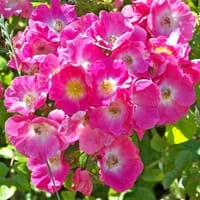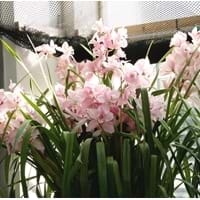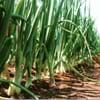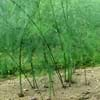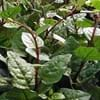Life Span
Annual and Perennial
Perennial
Type
Perennial
Tender Perennial
Origin
Hybrid origin
Southeastern Asia, China, Japan
Types
it is a type of rose
Cymbidium madidum, Cymbidium suave
Number of Varieties
Not Available
Habitat
Not Available
Open Forest, Rainforest, Woodlands
USDA Hardiness Zone
5-8
8-15
Sunset Zone
A1, A2, A3, H1, H2, 1a, 1b, 2a, 2b, 3a, 3b, 4, 5, 6, 7, 8, 9, 10, 11, 12, 13, 14, 15, 16, 17, 18, 19, 20, 21, 22, 23, 24
H1, H2, 14, 15, 16, 17, 18, 19, 20, 21, 22, 23, 24
Habit
Vining/Climbing
Clump-Forming
Minimum Width
Not Available
Flower Color
White, Pink
Not Available
Flower Color Modifier
Not Available
Not Available
Fruit Color
Non Fruiting Plant
Not Available
Leaf Color in Spring
Dark Green
Not Available
Leaf Color in Summer
Dark Green
Not Available
Leaf Color in Fall
Dark Green
Not Available
Leaf Color in Winter
Light Green
Not Available
Leaf Shape
Oval
Sword-like
Plant Season
Summer
Fall, Winter
Sunlight
Full Sun, Partial Sun
Partial Sun, Partial shade
Growth Rate
Medium
Medium
Type of Soil
Loam, Sand
Sand
The pH of Soil
Acidic, Neutral
Acidic, Neutral
Soil Drainage
Well drained
Well drained
Bloom Time
Summer, Late Summer
Not Available
Tolerances
Drought
Not Available
Where to Plant?
Container, Ground, Pot
Ground, Pot
How to Plant?
Divison, Seedlings
Bulbs, Divison
Plant Maintenance
Medium
Medium
Watering Requirements
Water Deeply, Water in morning to avoid prompting diseases
Do not let dry out between waterings, Needs watering once a week
In Summer
Lots of watering
Lots of watering
In Spring
Moderate
Moderate
In Winter
Average Water
Average Water
Soil pH
Acidic, Neutral
Acidic, Neutral
Soil Type
Loam, Sand
Sand
Soil Drainage Capacity
Well drained
Well drained
Sun Exposure
Full Sun, Partial Sun
Partial Sun, Partial shade
Pruning
Prune after flowering, Remove damaged leaves, Remove dead branches
Remove damaged leaves, Remove dead branches, Remove dead leaves
Fertilizers
Fast release fertilizer, Fertilize in early spring, Fertilize three times a year
All-Purpose Liquid Fertilizer
Pests and Diseases
Aphids, Black Spot, Caterpillars, Downy mildew, glasshouse red spider mite, Insects, Leaf Hoppers, Powdery mildew, rose leaf-rolling sawfly, Rust, Scale
Red blotch
Plant Tolerance
Drought
Drought
Flower Petal Number
Single
Single
Foliage Texture
Medium
Not Available
Foliage Sheen
Glossy
Not Available
Self-Sowing
No
Not Available
Attracts
Not Available
Bees
Allergy
Not Available
no allergic reactions
Aesthetic Uses
Showy Purposes, Used for decorating walls, fences, gates, hedges, etc.
Cut Flowers, Landscape Designing, Showy Purposes
Beauty Benefits
Perfumes
Not Available
Environmental Uses
Air purification
Air purification
Medicinal Uses
No Medicinal Use
Cancer, Eye Problems
Part of Plant Used
Flowers, Whole plant
Whole plant
Other Uses
Used as Ornamental plant
Air freshner, Employed in herbal medicine, Making Perfumes, Making Sweet Scented Oil, Oil is used for aromatherapy, Oil is used in perfume, soaps, creams, etc., Showy Purposes, Used As Food, Used as Ornamental plant, Used for fragrance
Used As Indoor Plant
Yes
Yes
Used As Outdoor Plant
Yes
Yes
Garden Design
Cutflower, Feature Plant, Groundcover, Hedges, Mixed Border, Rock Garden / Wall, Topiary / Bonsai / Espalier, Vine
Container, Cutflower, Hanging Basket, Houseplant, Rock Garden / Wall, Tropical
Botanical Name
ROSA 'American Pillar'
CYMBIDIUM
Common Name
Climbing Rose, Rambling Rose
Cymbidium Orchid, Sword-leaf Cymbidium, boat orchid
In Hindi
Climbing Rose
आर्किड
In German
Kletterrose
Cymbidium Orchid
In French
escalade Rose
Cymbidium Orchid
In Spanish
Rose que sube
Cymbidium Orchid
In Greek
αναρρίχηση Rose
kymbes
In Portuguese
Rosa de escalada
Cymbidium Orchid
In Polish
Climbing Rose
Cymbidium Orchid
In Latin
Rosa scandere
Cymbidium Orchid
Phylum
Magnoliophyta
Tracheobionta
Class
Magnoliopsida
Liliopsida
Family
Rosaceae
Orchidaceae
Clade
Not Available
Angiosperms, Monocots
Tribe
Not Available
Cymbidieae
Subfamily
Not Available
Epidendroideae
Number of Species
Not Available
Season and Care of Climbing Rose and Cymbidium Orchid
Season and care of Climbing Rose and Cymbidium Orchid is important to know. While considering everything about Climbing Rose and Cymbidium Orchid Care, growing season is an essential factor. Climbing Rose season is Summer and Cymbidium Orchid season is Summer. The type of soil for Climbing Rose is Loam, Sand and for Cymbidium Orchid is Sand while the PH of soil for Climbing Rose is Acidic, Neutral and for Cymbidium Orchid is Acidic, Neutral.
Climbing Rose and Cymbidium Orchid Physical Information
Climbing Rose and Cymbidium Orchid physical information is very important for comparison. Climbing Rose height is 300.00 cm and width Not Available whereas Cymbidium Orchid height is 30.00 cm and width 30.00 cm. The color specification of Climbing Rose and Cymbidium Orchid are as follows:
Climbing Rose flower color: White and Pink
Climbing Rose leaf color: Dark Green
Cymbidium Orchid flower color: Not Available
- Cymbidium Orchid leaf color: Not Available
Care of Climbing Rose and Cymbidium Orchid
Care of Climbing Rose and Cymbidium Orchid include pruning, fertilizers, watering etc. Climbing Rose pruning is done Prune after flowering, Remove damaged leaves and Remove dead branches and Cymbidium Orchid pruning is done Remove damaged leaves, Remove dead branches and Remove dead leaves. In summer Climbing Rose needs Lots of watering and in winter, it needs Average Water. Whereas, in summer Cymbidium Orchid needs Lots of watering and in winter, it needs Average Water.
